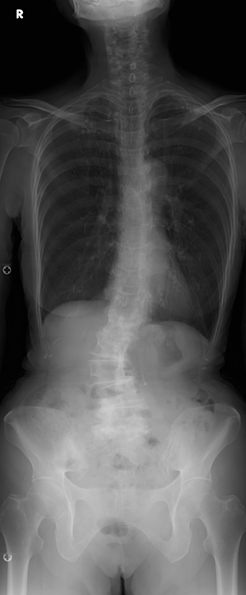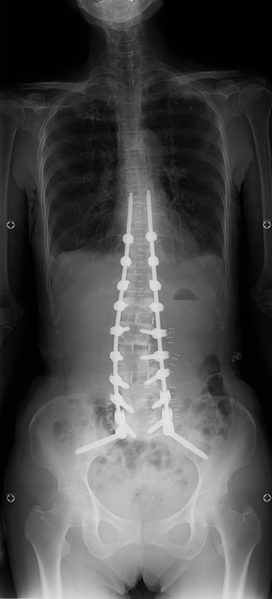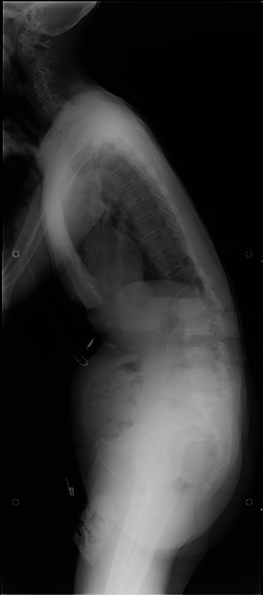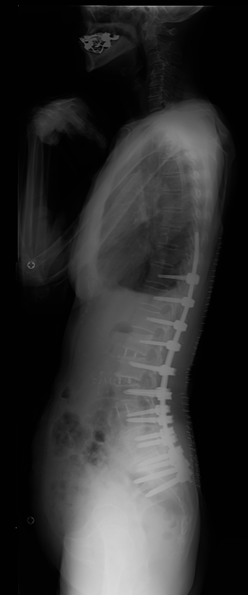Spinal Deformity (Adolescent Spinal Deformity, Adult Spinal Deformity)
01/05/2022
最終更新日時 :
03/10/2024
 webmaster
webmaster
We will provide information on surgical methods for spinal deformities (adolescent and adult), the length of hospital stay, and whether the procedures are covered by insurance.
Spinal Deformity (Adolescent Spinal Deformity, Adult Spinal Deformity)
Symptoms
Spinal deformities gradually progress and can cause cosmetic issues, poor balance when standing, and severe back pain. They are broadly categorized into adolescent idiopathic scoliosis, which progresses during adolescence, and degenerative scoliosis, which is more common in older adults.
For adolescent idiopathic scoliosis, surgical intervention may be considered if the curve exceeds 30 degrees. For degenerative scoliosis, surgery might be indicated in cases with significant curvature, back pain, and severe activity of daily living (ADL) impairment.
Especially in older adults, such surgeries have traditionally been avoided due to their invasive nature and high risks. However, with the introduction of minimally invasive surgical techniques, it is now possible to reduce invasiveness and risks, expanding the applicability of such procedures.
If you are struggling with a curved back and persistent pain, please do not give up and consider consulting a specialist. Severe kyphosis (curvature of the lower back) can lead to chronic compression of the stomach, increasing the risk of gastrointestinal complications such as gastroesophageal reflux disease (GERD).
For adolescent idiopathic scoliosis, surgical intervention may be considered if the curve exceeds 30 degrees. For degenerative scoliosis, surgery might be indicated in cases with significant curvature, back pain, and severe activity of daily living (ADL) impairment.
Especially in older adults, such surgeries have traditionally been avoided due to their invasive nature and high risks. However, with the introduction of minimally invasive surgical techniques, it is now possible to reduce invasiveness and risks, expanding the applicability of such procedures.
If you are struggling with a curved back and persistent pain, please do not give up and consider consulting a specialist. Severe kyphosis (curvature of the lower back) can lead to chronic compression of the stomach, increasing the risk of gastrointestinal complications such as gastroesophageal reflux disease (GERD).




Treatment methods
Diagnosis and balance issues due to scoliosis are evaluated using full-length spinal X-rays in the standing position.
In practice, the curves of the thoracic and lumbar spine, as well as balance, are assessed using quantitative measures such as the Cobb angle, PI-LL (pelvic incidence minus lumbar lordosis), and SVA ( sagittal vertical axis).
In practice, the curves of the thoracic and lumbar spine, as well as balance, are assessed using quantitative measures such as the Cobb angle, PI-LL (pelvic incidence minus lumbar lordosis), and SVA ( sagittal vertical axis).
Surgical methods
Surgery involves correcting the deformity and stabilizing it with instrumentation. The procedure is planned to align preoperative measurements with ideal values.
1) Two-Stage Surgery via Anterior-Posterior Approach
The first stage of the surgery involves performing XLIF or OLIF, followed by scoliosis surgery from the posterior approach in the second stage. Screws inserted from the posterior approach are placed using the percutaneous method (PPS), rather than the open method.
2) Posterior Scoliosis Surgery
The correction and fusion surgery is performed solely from the posterior approach using the open method.
3) Osteotomy (PSO)
Due to the highly invasive nature of the surgery, we perform it only in carefully selected cases.
- Body Part
- Back and Chest、Lower Back and Buttocks
- Type of Disease
- Spinal Deformity